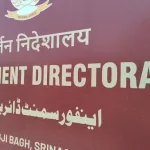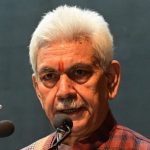The growing percentage of people living in urban areas as compared to rural ones is referred to as urbanization. In twenty-first century, one of the most important developments influencing India’s socioeconomic structure is urbanization. With more than 1.4 billion people, country has seen tremendous urbanization driven by both natural population expansion and migration from rural areas. Nearly 40% of Indians are predicted to reside in cities by 2030, making substantial economic contributions to the nation. However, there are a number of opportunities as well as difficulties associated with this urban expansion. The economic, social, and environmental landscapes usually change in tandem with urbanization. While it fuels economic growth, industrialization and infrastructural advancements, it also poses both challenges and opportunities for agriculture and allied sectors. Industrialization, technical development, and infrastructure spending have all contributed to the acceleration of urbanization.
India’s urbanization began during the British colonial period with the development of port cities like Mumbai and Kolkata. Growth was primarily due to trade, administration, and industrial activities under British rule. The industrialization policies after independence (1947) focused on economic development through urban growth. Large-scale migration from rural to urban areas in search of better employment opportunities began in the 1960s-70s. The 1990s brought economic liberalization, leading to rapid growth in the services sector, especially IT, which spurred urbanization in cities like Bengaluru, Hyderabad, and Pune.
Causes of Urbanization
There are many reasons for increase in urbanization, particularly in recent times. Cities have stronger employment opportunities than rural places since they are centers for sectors like manufacturing, services, and information technology. Generally speaking, urban places pay more, which attracts people from rural areas. Reputable educational institutions and specialized training facilities are found in urban areas. Superior healthcare infrastructure, including cutting-edge medical facilities is available in cities. Greater exposure to international trends, cultural diversity, and an enhanced standard of living are all reasons why urbanization is taking place at a galloping pace. Water shortage, land fragmentation, and declining farm production force rural residents to look for alternate sources of income in urban areas. Migration from rural to urban areas is compelled by droughts, floods, and issues brought on by climate change. Urban locations are more accessible to better digital infrastructure and transportation. Urban expansion has been the focus of government programs like AMRUT (Atal Mission for Rejuvenation and Urban Transformation) and Smart Cities Mission.
Repercussions of Urbanization
More than 60% of India’s GDP comes from cities, with major economic hubs like Bangalore and Mumbai serving as industrial centers. Urban regions are hubs for cultural innovation, entrepreneurship, and research. Iinfrastructure such as metro systems, airports, and cutting-edge communication networks are built here. Urban life may give more amenities, as well as more entertainment and aesthetically pleasing environment.
Urbanization has adverse effects also. Un-treated urban garbage for instance harms rivers like the Yamuna. Urban sprawl is the cause of deforestation and the loss of green cover. More than 65 million Indians endure substandard housing and sanitation conditions in slums. The gap between the wealthiest in cities and the destitute in rural areas is growing as a result of urbanization. Severe traffic in cities like Bangalore results in stress and financial losses. As a result of growing urbanization, cities like Chennai and Jaipur have had serious water issues. With little capacity for recycling or disposal, cities produce more than 1.5 lakh metric tonnes of waste per day, endangering ecosystems and the environment. Conditions like bronchitis and asthma are brought on by increased pollution levels. Higher rates of obesity, diabetes, hypertension, and numerous other illnesses are related urban lifestyle. Because of inadequate drainage infrastructure, flooding during the monsoon season increases urban vulnerabilities. Delhi’s biggest problem is still air pollution, which is mostly caused by industrial activity and vehicle emissions. There is also a severe water shortage in the city, particularly in the summer.
Strategies for Sustainable Urbanization
Particular attention should be paid to effective resource use, digital governance, and public involvement. Another alternative is to redevelop slums into sustainable housing. Particular attention should be paid to promoting alternative energy sources like wind and solar energy. The negative impacts of urbanization can be mitigated by increasing green space and establishing urban woods. Enforcing more stringent pollution control laws can also be quite beneficial. Development of Infrastructure, putting money into public transit, such as electric buses and metro rail will help to cut down pollution and traffic. Another choice is to update waste management systems with an emphasis on composting and recycling. Using desalination facilities and rainwater collection to provide sustainable water management can also be very beneficial.
By improving rural job prospects through initiatives like MGNREGA, boosting agricultural infrastructure, and giving farmers more access to markets, we can reduce urbanization while simultaneously improving quality of life in rural communities. Other alternatives for enhancing quality of life in rural areas include digital access, road connectivity, healthcare and education. The threat of growing urbanization can be lessened by equitable growth in all areas, particularly agriculture and related fields.
Impact of Urbanization on Agriculture and Allied Sectors
One of the most pressing concerns of rapid urbanization is the conversion of agricultural land for urban development. Expanding cities encroach upon fertile lands leading to a decline in cultivable areas. According to studies millions of hectares of farmland are lost to urban expansion annually, threatening food security. Urbanization also causes immense pressure on natural resources. The increasing demand for water in cities often reduces availability for irrigation. Industrial pollution, improper waste disposal and urban runoff further contaminate water bodies affecting both soil fertility and livestock health. Moreover deforestation, loss of biodiversity and soil degradation caused by urbanization leads to environmental imbalances. The replacement of green landscapes with concrete structures alter local climatic conditions making agriculture more vulnerable to extreme weather events such as heat waves and erratic rainfall patterns.
Urbanization also presents enormous opportunities for the agricultural sector. With rising urban population there is higher demand for diverse and high quality food products. This shift has led to the growth of agribusinesses, including food processing industries, organic farming and farm to table enterprises. Urban centers serve as hubs for technological innovations in agriculture. The integration of precision farming, hydroponics, vertical farming and artificial intelligence driven agritech solutions has transformed traditional farming methods, enabling sustainable food production even within urban settings. These advancements help optimize resource use, reduce dependency on traditional farmlands and improve overall agricultural efficiency.
The growing urban population has also fuelled the expansion of allied sectors such as dairy, poultry, aquaculture and horticulture. The demand for fresh dairy products, poultry and seafood has encouraged entrepreneurs to invest in large scale production, storage and supply chain management. Additionally agritourism and organic farming have gained popularity as urban consumers become more conscious of food quality and sustainability.
To form a balance between urbanization and agricultural sustainability, integrated land use planning, investing in rural development and promoting sustainable agricultural practices need to be adopted. Innovations such as urban farming, rooftop gardens, smart irrigation systems can help reduce the negative effects of urbanization. Additionally Government must implement policies that safeguard agricultural land, give incentives to young farmers and promote ecofriendly farming techniques. Strengthening rural infrastructure, providing financial support to farmers and encouraging digital agriculture can help that urbanization does not cost agricultural decline.
(The Author is Head, Veterinary Medicine, SKUAST Kashmir)








